Physical Address
304 North Cardinal St.
Dorchester Center, MA 02124
Physical Address
304 North Cardinal St.
Dorchester Center, MA 02124
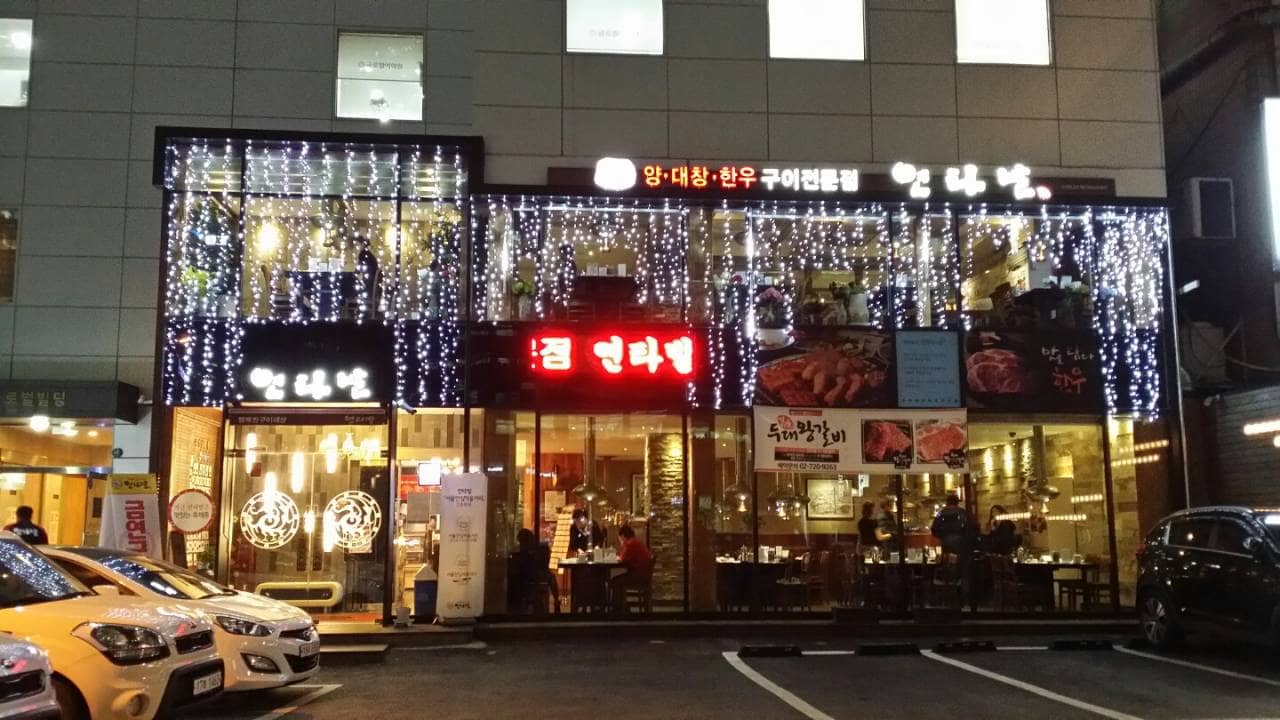
You’re on your way to a new country, and you have no idea what to eat. What would you like to try when you arrive? You’ll be pleased to know there are endless possibilities in South Korea that don’t begin and end with rice, here are four weird foods to try in South Korea that might fit the bill.
The culinary landscape of South Korea is as diverse as it is delicious. With influences from Japan, China, and indigenous traditions, the cuisine presents a mix of flavors and textures that are both unique and engaging. This diversity offers a wide range of dishes beyond the well-known staples, introducing adventurous eaters to a world of unfamiliar tastes.
These strange dishes will give you a new perspective on Korean food whilst tasting some of the oddest and surprising foods South Korea has to offer.
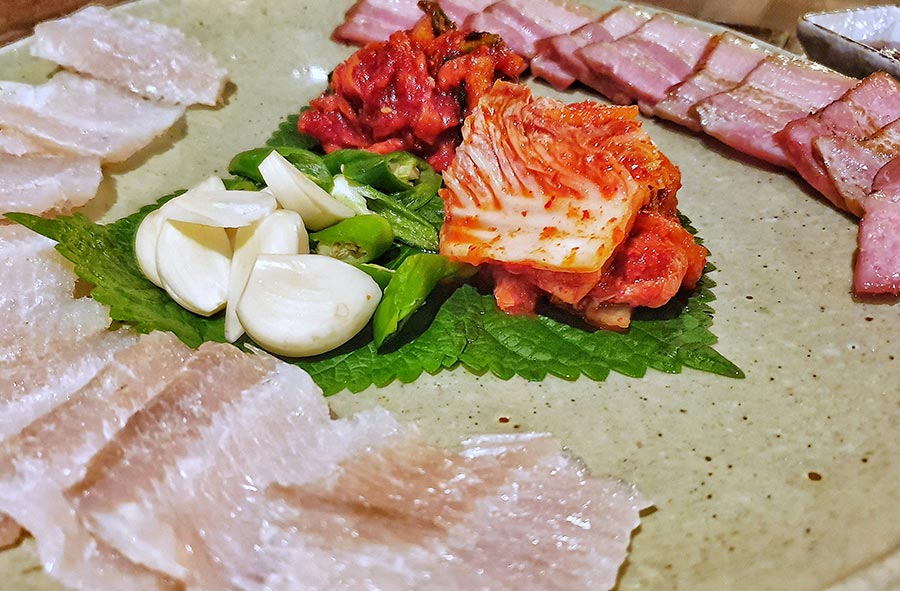
The preparation of Hongeo involves fermenting skate fish in pottery or wooden barrels for several weeks. The fermentation process helps break down uric acid into ammonia, giving the dish its strong odor. This traditional method is a key part of Korean culinary heritage, especially in regions like Jeolla.
This is a seafood that will challenge even the most extreme of eaters. If you ever come across Hongeo, you will know instantly. The extremely pungent odor, which many liken to the stink of ammonia, makes this one of Korea’s true delicacies. The smell is so strong and off putting that you will have a hard time even finding a restaurant that serves this dish.
Many Koreans that have had the courage to try Hongeo vow never to eat it again, the smell is that strong. Hold your nose, shove it in mouth, and pray that you don’t have a gag reflex…. if you’re brave enough to try this Korean delicacy that is!
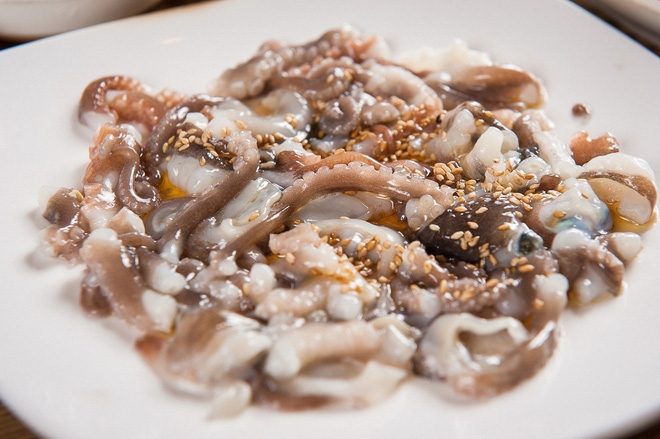
Sannakji (산낙지)
Raw octopus is a Korean delicacy that doesn’t seem too scary. It’s kind of like sushi, right? How about if it’s still alive? One variation of sannakji is to take a live octopus or squid and slice it up. Although it’s technically dead, the tentacles are still squirming, making it appear to be alive. Once you put it in your mouth, you can feel the suction cups grasping onto your teeth and tongue. The other variation of this dish is to take a baby octopus whole, no slicing and killing, and put straight into your mouth. Nothing else. It’s that simple. Eating a live octopus in Korea is probably the pinnacle of Korean food for the brave.
We’re used to seeing calamari on seafood menus, but sannakji, the Korean delicacy cooked with live octopus, makes calamari look tame. According to Food & Wine, it is immediately sliced and served, and is still moving as it is swallowed. Therefore, sannakji is often referred to as “wriggling octopus.” Clearly, this is not the food for those with a weak stomach.
Consider the tentacles and then the suckers on those tentacles if you believe that sannakji is a delicious name. According to Insider, a handful of people have choked to death after eating sannakji because the suckers adhered to the inside of their throats.
However, if properly prepared, this risky meal is edible. Insider described the procedure, adding that the tentacles’ mucous is first removed. The chef then chops the tentacles into tiny pieces to prevent them from obstructing guests’ airways. This preparation minimises the choking threat of the meal, and the sannakji is now ready to be served.
When served, sannakji is often paired with sesame oil and a sprinkle of salt. These accompaniments enhance the squid’s natural flavor and add a subtle texture contrast. This simple seasoning is key to enjoying sannakji, making it a memorable experience for the brave.
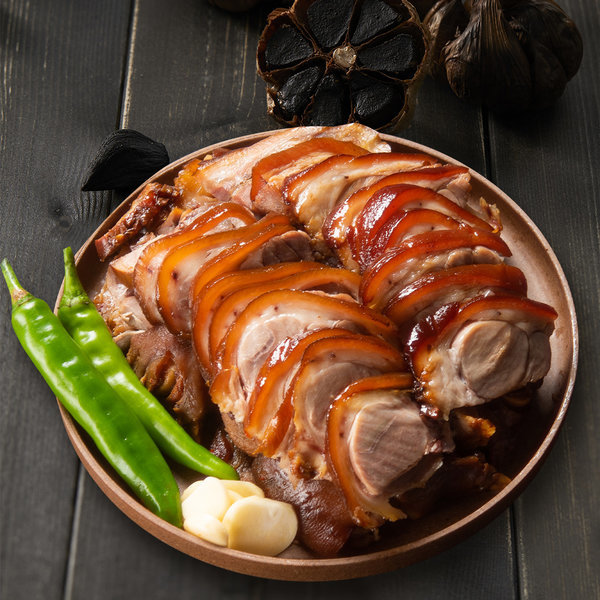
Mmmm…looks like another type of Korean barbeque. But While jokbal is another type of meat, it’s not what you might expect. Jokbal is quite literally pig feet. Just like the other Korean meats, jokbal is a food that usually accompanies alcohol, often late at night. To eat, jokbal is wrapped in sangchu, with a bit of ssamjang and garlic, like other barbecued meats in Korea.
Jokbal is not only tasty but also packed with nutritional benefits. Rich in collagen, it is often lauded for promoting joint and skin health, adding a nutritive value to its indulgent flavor. This makes jokbal a favored choice among health-conscious diners looking for something hearty.
This dish is actually quite tasty and is wildly popular with the general Korean public. Now you won’t be surprised if you walk into a restaurant and see a pig foot lying on the chopping board.
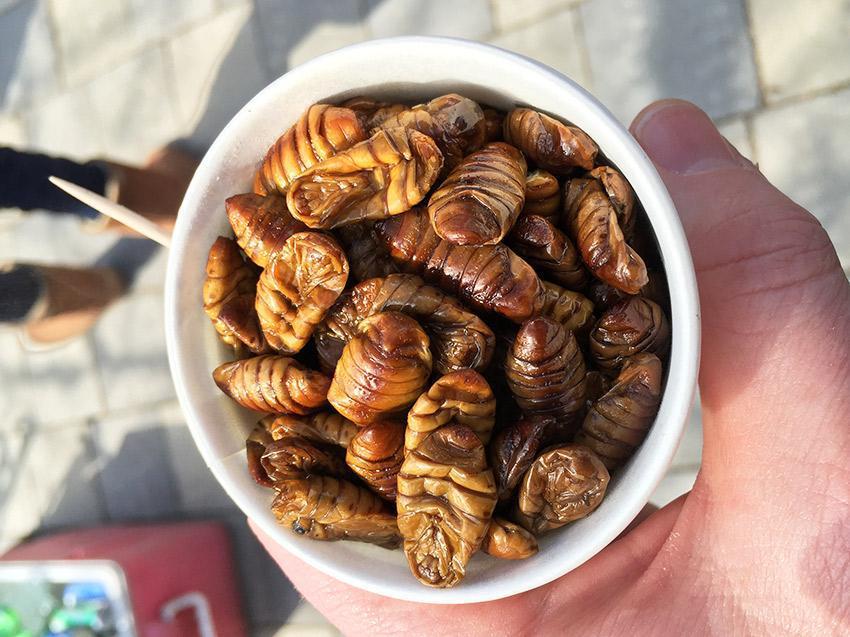
This is by far one of the visually strangest foods Korea has to offer. Mostly sold in markets or by vendors in parks, this dish is eaten quickly and on the go – like a hot dog you’d eat from a cart in New York City. Instead of a familiar hot dog, though, Beondegi is steamed silkworm larvae. Koreans grab a cup of the steamed larvae (complete with the juices that come out during the steaming process) and walk around the park enjoying the view, eating the silk worms with a toothpick.
Beondegi holds a special place in South Korea’s history, dating back to times when food resources were scarce. Today, it is a nostalgic snack for many Koreans, often enjoyed during festivals or leisurely strolls through parks. Vendors still serve it hot, maintaining its traditional preparation and presentation.
The taste is nothing special, nor is it particularly revolting (thought the smell takes some getting used to), but the actual feel of a silkworm larvae in your mouth, complete with the explosion that comes with the first bite, is what makes this Korean food so hard to swallow.
South Korea has quite a culinary landscape, and these 4 strange foods are only a small sample of the country’s delicious, but alternative offerings.
South Korea’s culinary diversity is in large part due to the country’s history as a trading ground for the Japanese, Chinese and Korean peoples, each of whom have contributed dishes to the country’s cuisine. You can eat at some great places or get food for next to nothing. Did we miss any great food spots? Let us know.